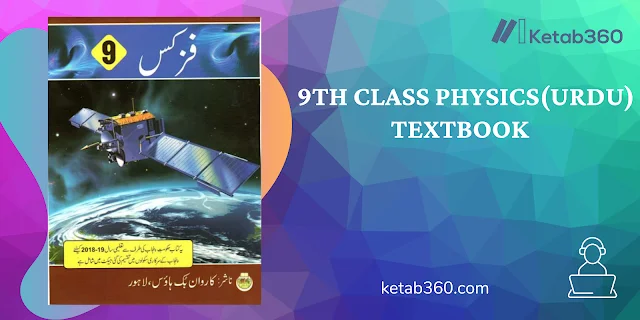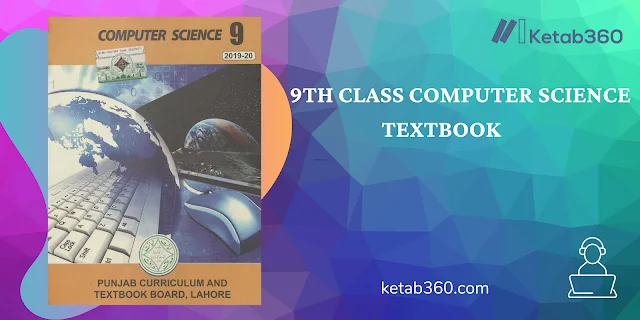9th Physics ( Urdu ) Book By Punjab Board
The Punjab Textbook Board has formulated this physics book for 9th grade to introduce students to fundamental physics concepts, particularly for those new to the 9th grade.
The initial chapter initiates with the subject of physical measurement, with the intent to clarify measurement principles and the treatment of quantities in physics. Each subject employs a unique method for valuing quantities.
This book serves as a guide for comprehending fundamental concepts spanning various domains of physics. Each chapter is accompanied by a dedicated exercise featuring pertinent and thought-provoking questions.
Obtain the most recent edition of the Physics Book for 9th Class in Urdu Medium from the Punjab Education platform. This Physics book caters to all cities in Punjab, such as Lahore and Faisalabad. Alternatively, acquire the 9th Class Matric Physics Book in PDF format for Urdu Medium. Access the 9th Class Physics Book PDF for downloading.
What does the book contain?
This book covers an extensive array of physics concepts, ranging from kinematics to thermodynamics. Each chapter is carefully organized, incorporating separate sections that delve into various aspects of the core subjects. The book’s meticulous arrangement ensures that previously grasped concepts reinforce the comprehension of subsequent ones, and vice versa.
At the beginning of each chapter, a brief synopsis of each unit is presented, providing learners with a glimpse of the upcoming content. This introduction intends to offer students a preview of the material they can anticipate as they advance through the chapter.
Chapter No. 1 : Tibi Mikdarain Aur Pemaish
The chapter titled “Tibi Mikdarain Aur Pemaish” in the field of physics concentrates on the essential principles of measurement and physical quantities. It introduces the significance of utilizing standard units and measurements within scientific inquiries. This chapter delves into diverse categories of measurements, including precision, accuracy, and the importance of dimensional analysis. It establishes the foundation for comprehending the quantitative dimensions of the physical realm.
Chapter No. 2 : Kinematics
The chapter on “Kinematics” in physics delves into the examination of motion independently of its underlying causes. It investigates notions such as displacement, velocity, and acceleration, underscoring the influence of time. Equations of motion are introduced to depict various forms of linear movement. This chapter establishes the cornerstone for comprehending the fundamental tenets of motion and forms a basis for more advanced mechanical subjects.
Chapter No. 3 : Dynamics
The chapter titled “Dynamics” in physics extensively explores the examination of forces and their impacts on motion. It initiates the introduction of Newton’s laws of motion, which elucidate the interactions between forces and objects. The notions of inertia, mass, and acceleration are investigated, in addition to distinguishing between weight and mass. This chapter serves as the fundamental framework for comprehending the interplay between forces and motion across diverse situations.
Chapter No. 4 : Forces Ka Ghoomany Ka Asar
The chapter titled “Forces Ka Ghoomany Ka Asar” within the realm of physics concentrates on rotational motion and the effects of force moments. It investigates how forces exerted at a distance from an axis can induce the rotation of objects. Notions such as torque, moment arm, and equilibrium are introduced to grasp the stability of a body subjected to multiple forces. This chapter establishes the foundational understanding of rotational dynamics and the equilibrium of forces within rotational systems.
Chapter No. 5 : Gravitation
The chapter titled “Gravitation” in the field of physics delves into the examination of the universal force of attraction between masses. It presents the introduction of Newton’s law of universal gravitation and delves into the concept of a gravitational field. The discussion of Kepler’s laws of planetary motion aids in comprehending the movement of celestial entities. This chapter imparts an understanding of the dynamics governing objects within gravitational fields and their influence on celestial occurrences.
Chapter No. 6 : Work Aur Energy
The chapter titled “Work Aur Energy” within the realm of physics delves into the connection between work, energy, and mechanical operations. It introduces notions such as kinetic and potential energy, alongside the work-energy theorem. It further explores the principles of conserving mechanical energy and conserving overall energy. This chapter serves as the fundamental underpinning for comprehending the transfer and alteration of energy in diverse physical systems.
Chapter No. 7 : Madah Ki Khasosiyat
The chapter titled “Madah Ki Khasosiyat” in the realm of physics investigates the physical attributes and conduct of various states of matter. It encompasses ideas like elasticity, stress, strain, and Hooke’s law. The study of fluids encompasses factors such as viscosity and surface tension. This chapter imparts understanding about the macroscopic attributes of materials and their reactions to external forces and circumstances.
Chapter No. 8: Madah ki Hararati Khasosiyat
The chapter titled “Madah Ki Hararati Khasosiyat” within the field of physics examines heat and temperature-related occurrences. It encompasses ideas such as mechanisms of heat transfer (conduction, convection, and radiation), specific heat, and the ideal gas law. Additionally, it explores the behavior of substances during phase transitions, including latent heat. This chapter serves as the fundamental groundwork for comprehending how matter reacts to alterations in temperature and thermal energy.
Chapter No. 9 : Intkal Hararat
The chapter titled “Intkal Hararat” within the field of physics emphasizes the procedures by which heat energy is conveyed. It encompasses conduction, convection, and radiation, elucidating the pathways through which heat traverses between materials. Specific illustrations, like heat conduction in solids and natural convection in fluids, are delved into. This chapter offers an understanding of the core principles steering heat transfer in diverse contexts, which is essential for comprehending thermal dynamics.
How to achieve success in 9th-grade Physics exams?
Below are several recommendations that can aid you in attaining favorable results in your 9th-grade physics examination.
Determination:
Approach the challenge with a resolute mindset. While tackling three science subjects might appear daunting, remember that it’s manageable.
Content Breakdown:
Acknowledge that your science curriculum is now divided into three books, aimed at enhancing your comprehension. These comprehensive materials are designed to facilitate your learning journey.
Initial Preparation:
Before delving into a unit, begin by reading the unit’s title and conducting online research. Grasping the terminology is crucial. If it remains unclear, consider watching related videos to gain better insights.
Initial Reading and Note-taking:
Scan through the unit, underline complex terms, and jot down arising questions. Allocate approximately two hours for this step. In class, pay close attention and take comprehensive notes.
Post-Lecture Clarification:
Following the lecture, seek clarification from your teacher to address any uncertainties. Engage in discussions about your underlined points and queries derived from your pre-lecture reading.
Review and Practice:
Revisit the chapter at home and attempt the exercise questions. This phase becomes effective only after completing the previous steps.
Utilize Reference Materials:
A guide can be a valuable resource for challenging questions. However, ensure you utilize it to facilitate learning, not for direct copying. Solve the problems independently before cross-referencing with the guide.
Comprehend Variables:
Physics involves diverse variables that influence each other. Recognize these interrelationships, as equations embody these connections.
Consistent Revisions:
Revise the book at least twice. Teaching complex concepts to friends can solidify your understanding.
Practice Numericals:
Repetition is essential for numerical problems. Solve them multiple times during initial learning and revision.
Leverage Online Resources:
Visit the Punjab textbook board’s website, elearnpunjab.com, which offers quizzes and videos for each unit.
Grasp Concepts:
Consult teachers and physicists through online video lessons to grasp core concepts.
Video Learning:
Complex topics like electricity and thermodynamics can be better understood through informative videos.
Hands-on Experimentation:
Apply hands-on experimentation to reinforce chapters on the laws of motion, both at school and home.
Practical Tool Application:
Engage with measuring tools in physics. Request opportunities to interact with these tools to enhance your understanding.
By adhering to these strategies, you can lay a solid foundation for success in your 9th-grade physics examination.
Tips for Effective Study of 9th Grade Physics Text Book in PDF Format.
Studying Physics Text Book effectively in the 9th grade can be accomplished even when using PDFs. Consider the following strategies:
To ensure a focused study session while engaging with the Physics Punjab Text Book , consider the following suggestions:
- Disconnect from the internet: Disable internet connectivity while studying to minimize distractions and maintain concentration on the material.
- Keep pen and paper handy: Have a pen and paper nearby to jot down important points, key concepts, or any thoughts that arise during the study session. This aids in better retention and organization of information.
- Utilize the internet selectively: Turn on the internet only when necessary, such as when you require additional information on specific topics. Use it as a supplementary resource rather than a constant distraction.
- Capture screenshots: If you come across confusing sections or passages in the book, take screenshots to share them with your teacher or classmates for clarification and discussion. This promotes collaborative learning and helps in resolving doubts.
- Prioritize eye safety: Take care of your eyes while studying by wearing appropriate protective gear, such as glasses or utilizing screen filters. This ensures your eyes remain safe and minimizes strain during extended study sessions.
By implementing these recommendations, you can enhance your focus, note important points, utilize the internet judiciously, collaborate with others, and safeguard your eyes while studying the Physics Text Book.






